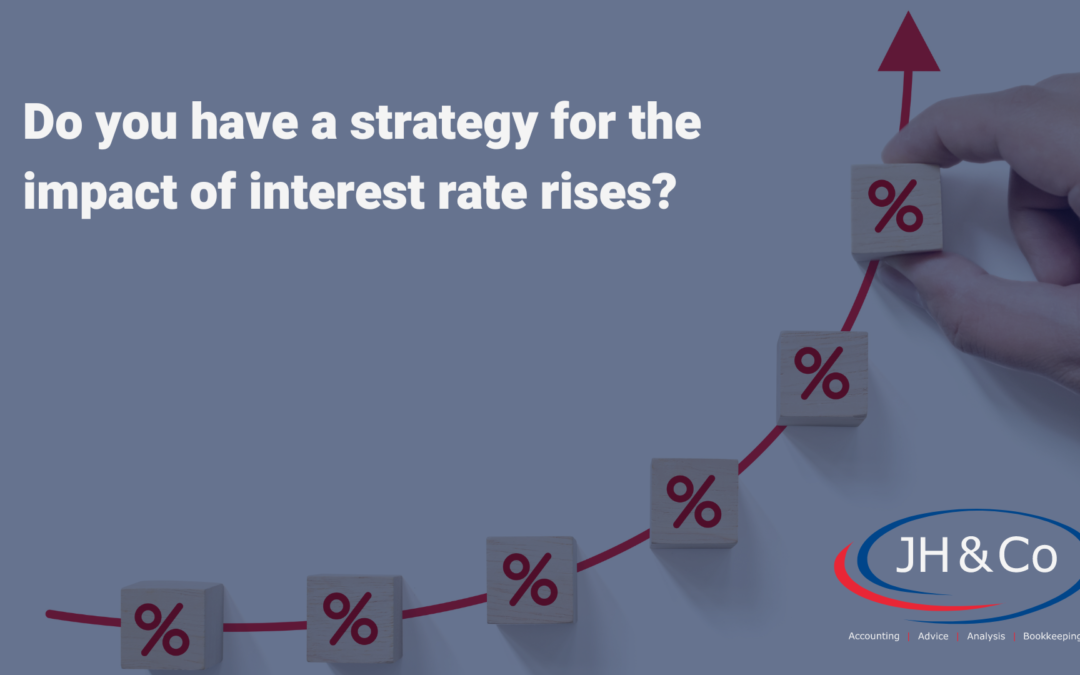Australian Government Disaster Recovery Payment
Right now, the economic environment is feeling a little shaky, and people are feeling the impact of inflation and rising interest rates – at home and in business. If you have debt in your business (or a mortgage at home!) it is well worth reviewing your current arrangements and getting a strategy in place to weather the impacts.
In the early days of JH & CO, through the late 1980s and early 1990s, interest rates were 18% – 20%. We saw many businesses experience financial difficulty due to these high interest rates – but there were often other factors at play too, including lack of forecasting, poor cashflow and liability management.
Today interest rates are no way near that high – but money has been “cheap” for the last decade and we know interest rates are predicted to increase continuously, with the balance of economists predicting a peak of 3.1% in August 2023. Coming from such a low starting point, this will still have a significant impact.
How you manage the debt your business carries requires you to consider the sensitivity you have to increased interest rates.
-
How will that impact your cashflow and your profitability?
-
What are your tolerances – how much of an increase can you manage?
-
What strategies can you take to mitigate the impact of further increases?
The big question is around interest – should you choose Fixed or Variable? And if you choose Fixed – how long do you fix it for?
First of all, don’t choose Fixed Interest to try and beat the market. Don’t assume you can pick the market better than the experts. This might be controversial, but we would suggest the time to fix your interest rate has passed. Why? The data shows that, in a period of increasing interest rates, those that choose to fix their rate statistically pay more than those who choose variable.
Think about why you would fix your interest rate. More often than not, businesses choose fixed interest rates as a management strategy. Owners take a view they are comfortable to pay a certain amount of interest irrespective of potential future interest rate changes. The liability is known and the risk is managed.
Another common approach is to have a combination of fixed and variable rates. Again, this is usually based on being comfortable to fund a certain amount and managing risk without trying to beat the market.
We highly recommend working with your accountant and your bank to forecast your debt management, do some scenario planning, and develop a strategy that will work for you. If you invest the time in this work today, you will be positioned to avoid the stress and worry, and instead be able to focus on continuing to grow the business you love.

We are here to support you




Recent Comments